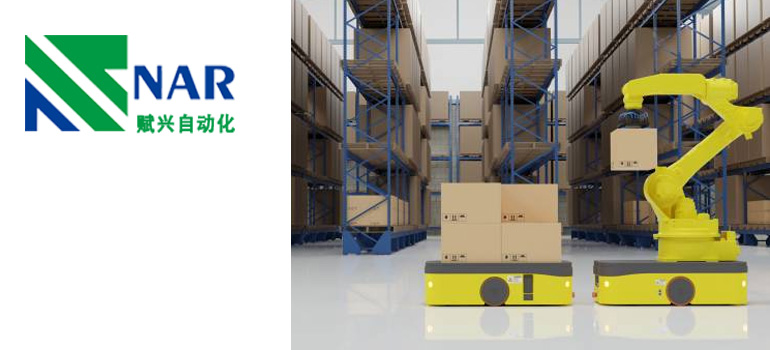Summary:
The Ins and Outs of Automated Inbound Palletizing
What is an automated pallet stacking system?
The advantages of automatic storage pallet stacking system
How to achieve the best results?
With the continuous advancement of technology, automation plays an increasingly important role in the logistics and warehousing industry. The automated pallet stacking system is a key technology in modern warehouse management, providing enterprises with more efficient and reliable cargo handling solutions. This article will explore the internal and external aspects of the automatic storage pallet stacking system, including its working principle, advantages, and how to achieve the best results in warehousing operations.
What is an automatic inbound pallet stacking system?

The automated pallet stacking system is a system that utilizes automation equipment and robot technology to transfer goods from the inbound area to the warehouse storage area and stack them. It usually includes components such as conveying equipment, stacking robots, sensors, and control systems, which can achieve automatic processing and stacking of palletized goods.
The working principle of the dynamic storage pallet stacking system is usually as follows:
Goods storage: The goods are first delivered to the storage area, which may be completed by forklifts or other loading and unloading equipment. The storage area is usually equipped with conveying equipment to transport goods to the starting point of the stacking system.
Scanning and identification: Before the goods enter the stacking system, sensors and scanning equipment are usually used to scan and identify the goods. This helps the system determine the type, size, and location of the goods, thus preparing for subsequent stacking operations.
Automatic Stacking: Once the goods are identified and ready, the stacking robot will start performing the stacking task. They transfer goods from the storage area to the storage area according to the pre-set stacking plan and path, and stack them in the designated way.
Storage and management: After the stacking is completed, the goods are stored in a designated location in the warehouse. Storage areas are usually controlled by warehouse management systems, making it easy to track and manage inventory.
The advantages of automatic storage pallet stacking system
The automatic inbound pallet stacking system has many advantages, including:
Improving efficiency: Automated handling and stacking of goods can greatly improve the speed and efficiency of warehouse operations. Compared to manual stacking, automated systems can complete tasks faster and improve productivity while reducing errors and delays.
Save labor costs: Automation systems reduce reliance on manpower, thereby saving labor costs. They can operate without the need for personnel supervision and can work continuously 24/7, thereby reducing operating costs.
Improving accuracy and precision: Automation systems can ensure accurate stacking and storage of goods through precise robot motion and position control. This reduces errors and damages, and improves the accuracy of inventory management.
Space saving: Automated stacking systems can usually make more efficient use of warehouse space because they can stack goods vertically, minimizing storage space occupation.
How to achieve the best results?
To achieve the best results in warehousing operations, the company can consider the following points:
Choose a suitable system: Based on the characteristics of the warehouse, the type and volume of goods, and the needs of the company, choose a suitable automatic inbound pallet stacking system. Different systems have different functions and performance, so choosing the most suitable system is crucial.
Reasonable planning and layout: When installing an automated stacking system, it is very important to plan the layout of the warehouse reasonably. Ensure seamless connection between the system and other warehousing equipment and processes, and optimize operational processes to the greatest extent possible.
Trainers: Although automation systems can reduce reliance on manpower, qualified operators are still needed to supervise and manage the operation of the system. Provide appropriate training and guidance to employees to ensure they can effectively operate and maintain automation equipment.
Regular maintenance and upkeep: The automated stacking system requires regular maintenance and upkeep to ensure its normal operation. Regularly inspect all components of the equipment and promptly repair and replace them to reduce malfunctions and downtime.
The automated pallet stacking system provides an efficient and reliable solution for modern warehouse management. By utilizing automation technology, companies can improve the efficiency and productivity of warehouse operations, reduce costs, and improve the accuracy and reliability of inventory management.
Choosing the appropriate system, planning the layout reasonably, training personnel, and regularly maintaining equipment are key steps to achieving optimal results. With the development of logistics and warehousing industries, automated inbound pallet stacking systems will continue to play a crucial role, providing enterprises with sustained competitive advantages and growth opportunities. By understanding the working principles, advantages, and key steps to achieve optimal results of these systems, companies can fully utilize automation technology to improve the efficiency and productivity of warehousing operations.
In the future, with the further development and innovation of technology, automated pallet stacking system may become more intelligent and flexible. For example, using artificial intelligence and machine learning technologies can achieve real-time monitoring and optimization of warehouse operations, thereby further improving efficiency and accuracy. In addition, with the continuous maturity of robotics technology and the reduction of costs, the application scope of automation systems may also expand to cover more warehousing tasks and industries.
Overall, the automated pallet stacking system is one of the key technologies in modern logistics and warehouse management, providing enterprises with efficient and reliable cargo handling solutions. By fully utilizing the advantages of these systems and taking appropriate measures to achieve optimal results, the company can achieve continuous improvement and growth in warehouse operations, thereby maintaining a competitive advantage and adapting to constantly changing market demands.
Maybe you are interested in the following: Streamline Your Warehouse: Mastering Palletising Logistics
